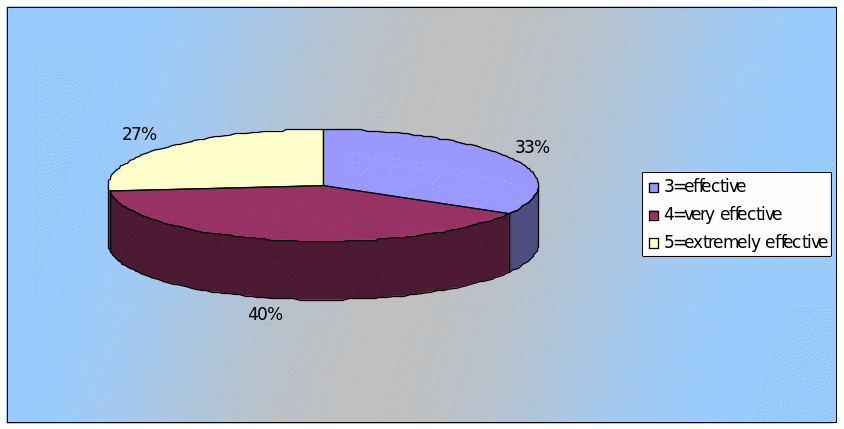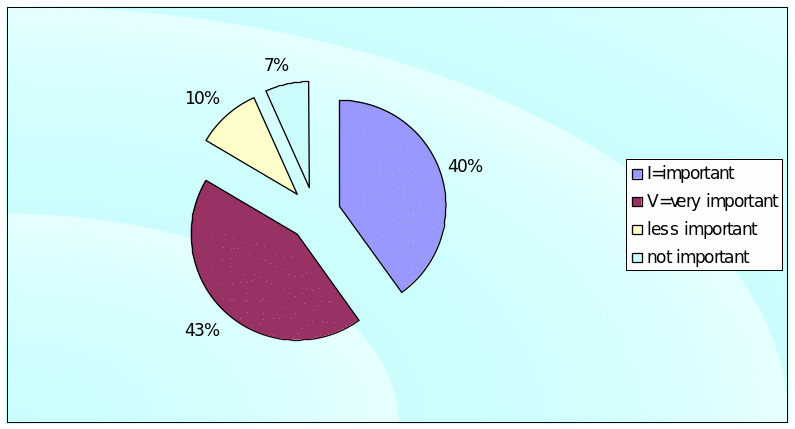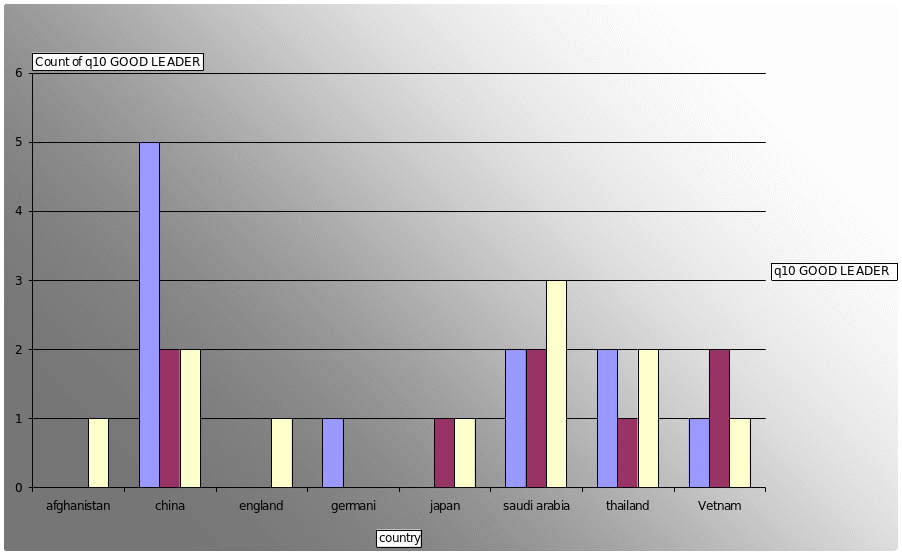Abstract
This study was conducted in more than thirty universities to understand the educational leadership roles among students and teachers. This study intended to show the significance of good and positive relationships in learning institutions, between students and teachers. The results of this study revealed that when there is a good communication line between students and the administration, strikes in such institutions are averted, hence leading to a proper learning environment (Cunningham 1997, p.34). Moreover, many respondents seem to think that students often do not raise administrative issues through proper channels. Through this study, it was concluded that all learning institutions should provide proper leadership programs, in order to help students select appropriate leaders.
Introduction
Educational leadership is a very crucial issue and it has a direct impact on the students’ performance in their academic work. This does not only affect the students, but also teachers fall into this trap of poor educational leadership since their output is also affected (Cunningham 1997, p.94). All learning institutions should ensure that there are proper leadership programs in these organizations to ensure that parents, students, and teachers work towards the same goal of achieving quality education. This study shows that many leaders in these institutions are not accountable for either the resources or their behaviors and this is a negative trend, which can lead to chaos among the students and teachers.
Some institutions have not democratized the selection process of leaders among the students and this issue is very sensitive to the learning environment, many respondents suggested that the selection of student leaders should be left to students only. To address this issue of democracy administrators should give students a chance to choose their own leaders through a proper and un-interfered election; this will boost democracy among students and students will learn to trust their leaders.
Methodology
The sample
This survey was done on, 20 females and 10 males from all sides, students and teachers. It was a very successful survey since all the interviewees responded well to the questionnaire. These respondents came from many learning institutions.
Data Collection
This study was done through data collection and the main method used to collect data was the use of a questionnaire. Some of the questions in the questionnaire are as follows;
- What is your gender?
- What is your age?
- The highest level of education
- Importance of improvement in school leadership
- Things to do so as to improve school leadership
- Highest level of education
This study attempted to obtain the essence of improving the school leadership skills. It also suggests ways of creating good leadership norms among school leaders. This study has revealed the risks of poor school leadership including academic failures among students who are prone to these types of risks. This study also tried to obtain the educational leadership knowledge and how leaders consider their qualities among other students (Waters 2006, p.45).
Results
The people interviewed were locals and also from other countries. This survey sorted the age into groups of various age limits. These age groups are as highlighted on the graph below;

This graph can be summarized as follows: 7 females and 4 males were between 18-20 years of age, 4 females and 3 males were between the ages of 24-30, seven females and two males were between the ages of 21-23, while only three females were above the age of 30 years.
The pie chart below shows the results of respondents on the importance of creating norms among school leaders; it is remarkable how most of the students wanted the improvements of leadership in learning institutions. The majority of these respondents said that it was important to create norms among school leaders, while only 14% responded negatively.

The above pie chart is sourced from Waters (2006, p.65).
It is important to note that leadership is most effective on the students’ academic success. This is justified by the results shown here, since 40% of the students consider it as very effective, 33% effective, and 27% as extremely effective. Most of the respondents were very enthusiastic in answering this question since it shows how they value their leaders. These leaders have direct implications for their academic performance. The leaders together with the administration come up with the institutions’ education policy and that is why they are deemed so important.

This pie chart is sourced from Waters (2006, p.72).

These results show how students rated the importance of self-improvement in school leadership, 43% of the students said that it was very important for self-improvement, while 40% considered it as important. On the other hand, 10% of the students considered this matter as less important, while only 7% considered it as not important. The immediate graph above is sourced from Waters (2006, p.81).

The above graph is sourced from Waters (2006, p.31). This graph points out that, the students interviewed considered the opinion of employees very important to the proper running of an institution.
The graph below illustrates data as collected from the respondents, the importance of shared vision between the leaders and the administration.

The above graph is sourced from Waters (2006, p.16).

This data shows that the students want leaders with the highest qualification as indicated by the blue column; the yellow color shows how students value experienced leaders, while the ability of a leader to deal with students’ affairs is highlighted by the brown color.

This pie chart is sourced from Waters (2006, p.42) and it shows the importance of having good leadership in institutions. The majority of them said yes, while only 7% were not for this idea.
Discussion
This study concurred with some academic articles and leadership journals, but conflicts of the same were revealed. The first table indicates the various age groups which were interviewed and they were very aggrieved on the status of school leadership in their institutions. These people suggested various ways of improving this status and they will be discussed in detail later in the recommendations.
The first graph shows how the majority of the students consider the importance of creating norms in school leadership. A quality leader should have the appropriate leadership values in order to win the confidence of the students. When these leadership norms are ignored the student leaders in these institutions may risk being rejected (Bass 2008, p.56). The norms of leadership include the way leaders communicate to their comrades, if there is a communication barrier then the subordinates might be dissatisfied with their leaders.
The second graph shows the effects of leadership on the students’ academic affairs. School leadership helps students to interact positively with their teachers hence they end up improving on their academic performance. Many students suffer psychologically when the school leadership is in a mess and such instances the students perform poorly in their exams and other activities in school. Furthermore, students also see their leaders as role models and if such leaders have questionable behaviors, students tend to copy the same behaviors from them (Bass 2008, p.36).
The final graph shows the importance of self-improvement in school leadership. Leaders in learning institutions need to engage in programs that will help them improve their leadership qualities (Bass 2008, p.27).
Some of the students who were interviewed were categorical on the matter of engaging employees in decision-making. Many administrators ignored the views of their employees and hence end up implementing the wrong ideas. This study shows that the students considered the opinion of employees as significant as the rest of the administrators.
Conclusion
In conclusion, leadership in schools should be two-way, the students should play their part, and also the administration should ensure that the students do not go beyond their capacity of leadership. It is clear that a high percentage of students knew the importance of good leadership in their institutions and many were keen on improving the same. It was just a small percentage of the students that did not consider the importance of proper leadership in schools. This data might have some deviations because of a limited number of respondents and more improvements are required.
Recommendations
In order to overcome poor leadership in learning institutions, students should select leaders of integrity with the help of the administration. The administrators of these institutions should provide leadership programs in their institutions so as to help students improve their leadership skills and qualities. In addition, to improve the performance of students in their academic work, administrators should ensure that leaders do not underperform in their duties. It is recommended that the students’ councils in learning institutions should instil proper discipline among students so that they can steer clear of misconduct in school. In order for the school leaders to gain back confidence among the students, the leaders should ensure that the administration is checked so as not to impose poor policies on students, which might affect their academic performance negatively.
References
- Bass, B M 2008, The Bass handbook of leadership: Theory, research, and managerial applications, 4th Ed. New York: Free Press.
- Cunningham, W G 1997, The American school superintendent: Leading in an age of pressure.San Francisco: Jossey-Bass Press.
- Waters, J T 2006, School district leadership that works. Denver, CO: Mid-continental Research for Education and Learning.